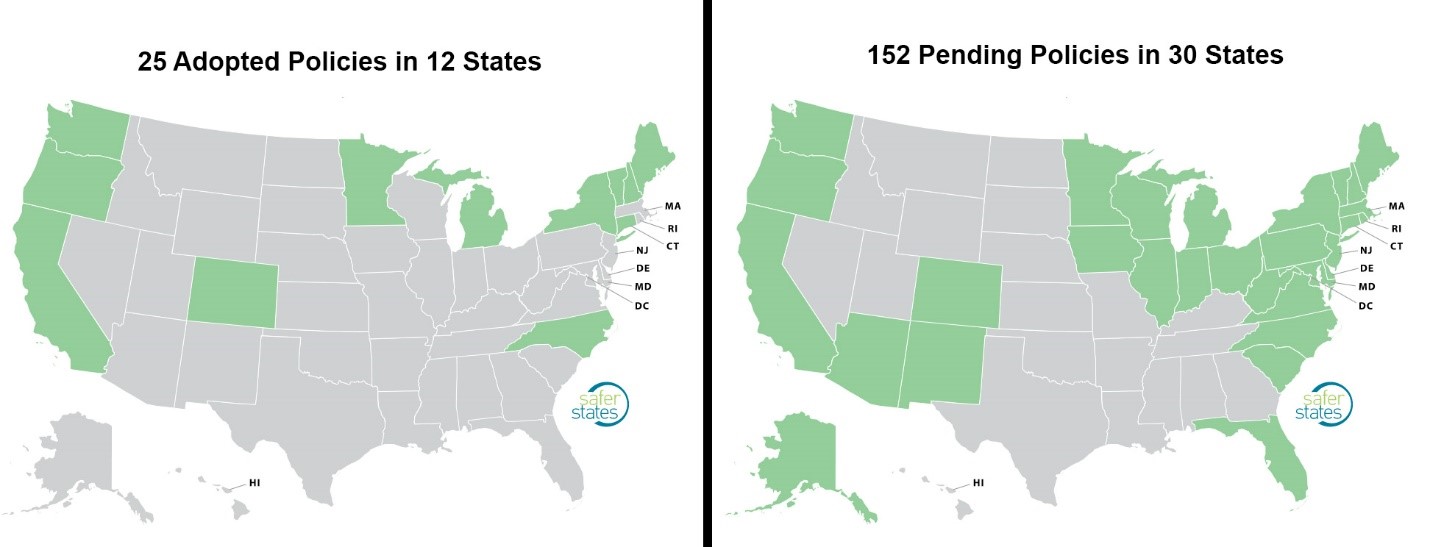

INSIGHT
PFAS: Contaminants of emerging concern
Connect with us
PFAS is an acronym you may have heard of in recent years as research studies on these commonly used chemicals continue to reveal their potentially harmful effects on humans as well as the environment. It can enter our bodies through the food we eat, the water we drink and the air we breathe.
What is PFAS?
Per- and polyfluoroalkyl substances, or PFAS, are a large class of over 4,000 synthetic chemicals. They are widely used in everyday products including food packaging, non-stick coatings, clothing and carpets. It is also a key ingredient in firefighting foam. The heat, oil and water-resistant properties that make PFAS so effective for these applications also contributes to their persistence and buildup in our bodies as well as the environment.
Of the thousands of PFAS chemicals, studies have mainly been focused on perfluorooctanesulfonic acid (PFOS) and perfluorooctanoic acid (PFOA). Both have been shown to be associated with high cholesterol, low infant birth weights, adverse effects on the immune system, thyroid disorders and cancer.
PFAS and the Water Value Chain
The use of PFAS chemicals has decreased significantly in the past decade. However, because they do not break down in the environment, common depositories remain. These include manufacturing facilities, landfills, and sites where firefighting foams are used for both training and actual fires, such as military bases and airports. PFAS is not always contained at these sites, causing it to leach into groundwater or be carried away in stormwater runoff, eventually entering drinking water sources.

Last month the Environmental Working Group, who has been tracking PFAS in water systems since 2012, estimated that in the U.S. there are now over 2,200 contamination locations in 49 states.
EPA Regulations on the Horizon
The EPA has been studying PFAS for several years and in 2016 issued a non-regulatory lifetime health advisory of 70 parts per trillion (ppt) for individual and combined PFOA and PFOS in drinking water. Since that time 12 states, many of which have sites with high contamination levels, have enacted their own PFAS legislation. Another 19 states have pending legislation.

In 2019 the EPA announced the PFOA and PFOS (PFAS) Action Plan. The Plan describes long- and short-term actions the EPA is taking to clean up PFOA and PFOS from contaminated water sources.
A critical stage in the plan happened earlier this year when the EPA announced a preliminary regulatory determination for both PFOA and PFOS under the Safe Drinking Water Act (SDWA). The proposal is still under review and final determination is expected no later than January 2021. This is the first step in establishment of a maximum contaminant level (MCL) which would impose requirements on water utilities. How the cleanup will be funded is a hot topic. The American Water Works Association (AWWA) estimates that at the current health advisory level of 70 ppt, cleanup would cost $3 billion. If a lower MCL is set, the cost estimates rise substantially.
What is being done to limit PFAS exposure now?
Testing and removal of PFAS from drinking water has already begun in many of the states with adopted policies and the Department of Defense has been investigating and addressing contaminated sites at military bases across the country.
Currently there are three main filtration methods to reduce PFAS levels in the water treatment process. These include granular activated carbon (GAC), ion exchange, and high-pressure membrane filtration. As with other treatment technologies, the specific water system determines the advantages and disadvantages for each of these methods.
For a recent PFAS mitigation project Bartlett & West designed, GAC was chosen as the treatment method. Capital, operations and maintenance costs and treatment effectiveness were major considerations. In addition, the client was highly limited by the amount of space available for the equipment due to the size of the building site and the added challenge that the new facility match the look of the current treatment plant built in early 1900’s. Learn more about this project on our website.
Looking Forward
The pending drinking water regulations are just the beginning of the PFAS cleanup process. There are a lot of discussions about how the cleanup will be funded once the regulations are in place. There are also several research projects underway to help guide future actions for potential treatment methods at landfills and other waste facilities, as well as new technologies to more thoroughly destroy PFAS.
At Bartlett & West we are tracking progress on these topics and the impact they may have on water, wastewater and solid waste utilities. If you have any questions regarding testing, best practices or PFAS removals processes, please don’t hesitate to tell us about your project using the form below.
Tell us about your project
We’d love to work with you. Tell us the services you are seeking and one of our team members will connect with you.